
Ephemera
British nurses of Constantinople
The famous nurse of Florence Nightingale was based in the military hospital of Scutari on the Asian shore of Constantinople during the Crimean War and revolutionised nursing care. Her work in set the standards for modern nursing. For the rest of her life she continued to campaign for improved sanitary conditions in both military and civilian hospitals.
Less well known are British civilian nurses who worked with the Ottoman Hilal-i Ahmer (precursor of the Turkish Red Crescent) and this tradition went as far back as at least the Russo-Turkish war. Many of these British nurses did receive medical training in the West and so their skills would have been very welcome to the hard-pressed Ottoman authorities who faced numerous disastrous wars through the period of the Balkan Wars, First World War etc. There were also female Muslim Ottomans serving as nurses as well but in very limited numbers and most did not have formal training. The numbers of war wounded in these horrific wars were immense and often the soldiers suffered from contagious diseases such as cholera and typhoid, so these volunteer nurses were certainly heroes of their day. In gratitude the Ottoman authorities allowed the British and French families of these nurses to remain in their Empire without restriction when WWI broke out, when the Ottomans quickly allied with the Germans and went about expelling the remaining British and French Levantines from their capital city.
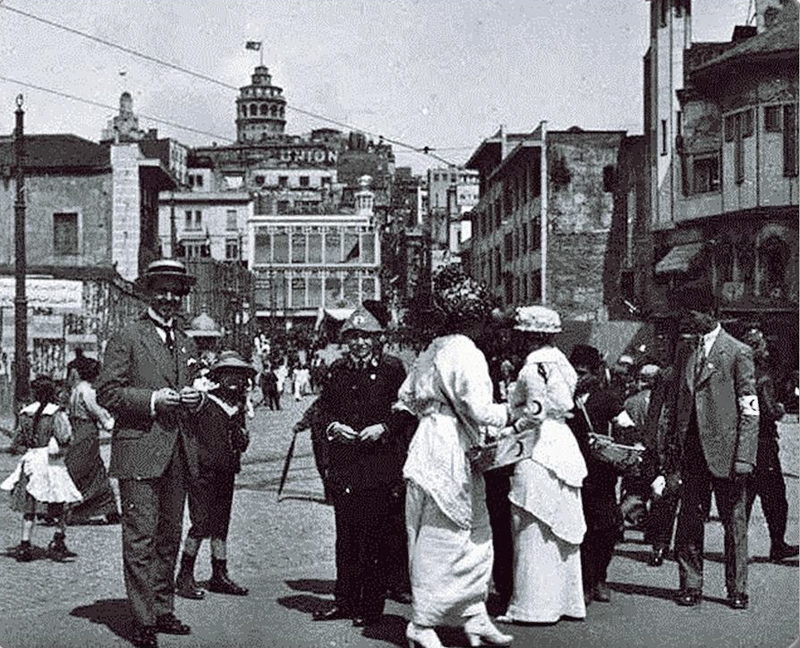
What appear to be British nurses collecting for Hilal-i Ahmer on Galata Bridge in 1915.
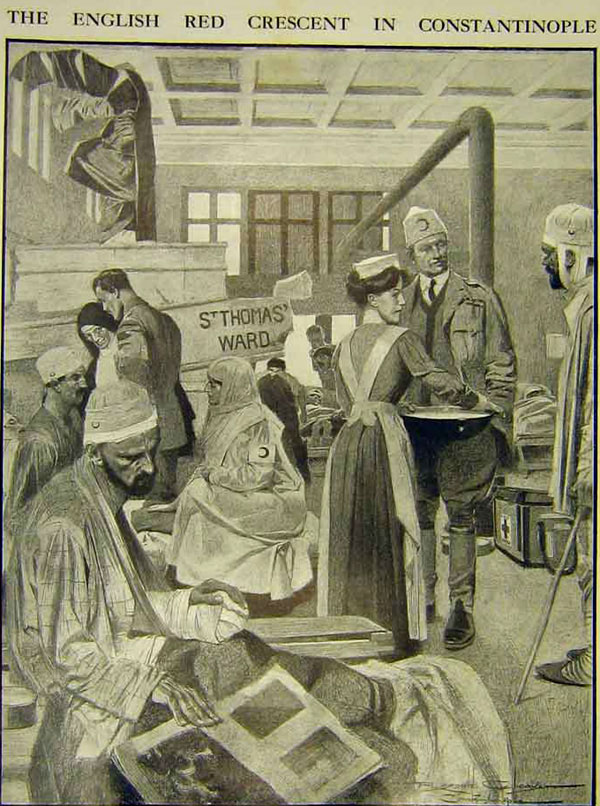
An image from the ‘Graphic’ Jan 11, 1913 - caption underneath - Our artist writes: “The three Red Cross, or rather Red Crescent, units, financed by Sir Ernest Cassel, and under the directorship of Major Doughty-Wylie, C.M.G., have been divided up. Some are at Beikos with the sick, about a unit and a half are at the Fine Art School by Seraglio Point with the wounded, and there is an advance camp nearer the front. At the Fine Art School, the subject of the illustration, all the casts have been removed, excepting a Nike and Parthenon frieze, that have been swathed in red calico by the Turks to prevent their bothering of the patients. The hospital had at the moment eighty-four wounded, seventy-six arriving together, who had been four days at the front, then six days in trains, without receiving care. Of these, many of whom were otherwise ill, thirty-six died. Mrs. Doughty-Wylie, two Turkish ladies, and two French sisters have been hard at work with the doctors.” Drawn by Reginald Cleaver.
Below an illustration from the Graphic again, from Sept 29, 1877, showing English ladies working for the Turkish wounded under the Red Crescent [Hilal-i Ahmer].
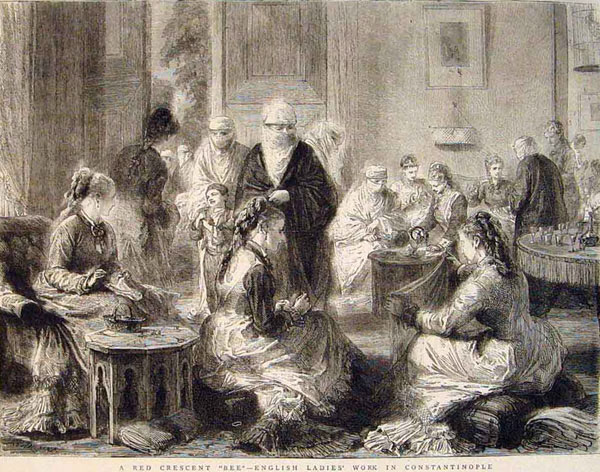
Further information from the book Cassell’s Illustrated History of the Russo-Turkish War, Edmund Ollier (1885) gives some more clues: ‘There were also several ladies’ committees in Constantinople and along the Bosphorus, the members of which prepared bandages, and made beds, sheets, and other necessaries. Mrs. Layard, Lady Kemball, and Mrs. Hanson, were active at Therapia, and the Princess of Reuss formed a committee at Buyukdéré with the same charitable objects. The three principal societies—the Red Crescent, the Stafford House, and the British National—acted harmoniously together...’
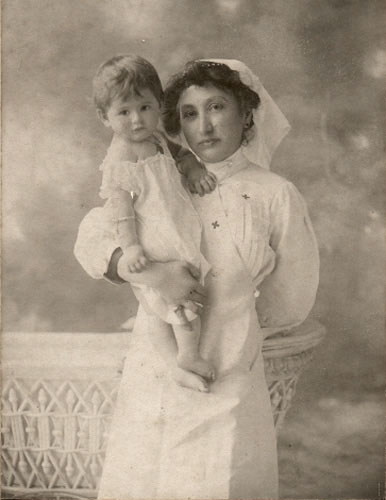
Rosalie ‘Rose’ Tubini (neé Corpi) with her daughter Nettie, taken in 1914. She is wearing the nurse’s uniform for her work nursing Turkish wounded of the Balkan Wars.
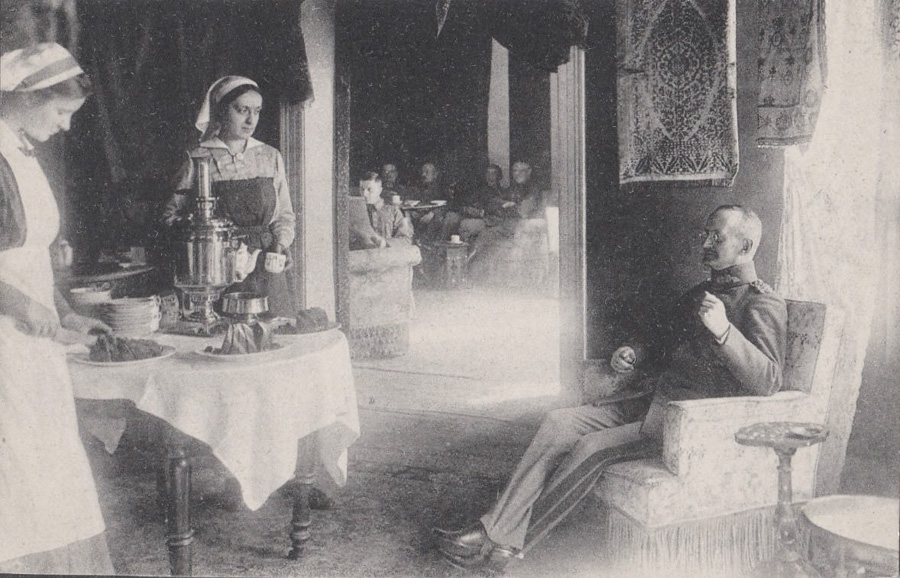
German nurses in an officer’s mess in Constantinople, pre 1918.
